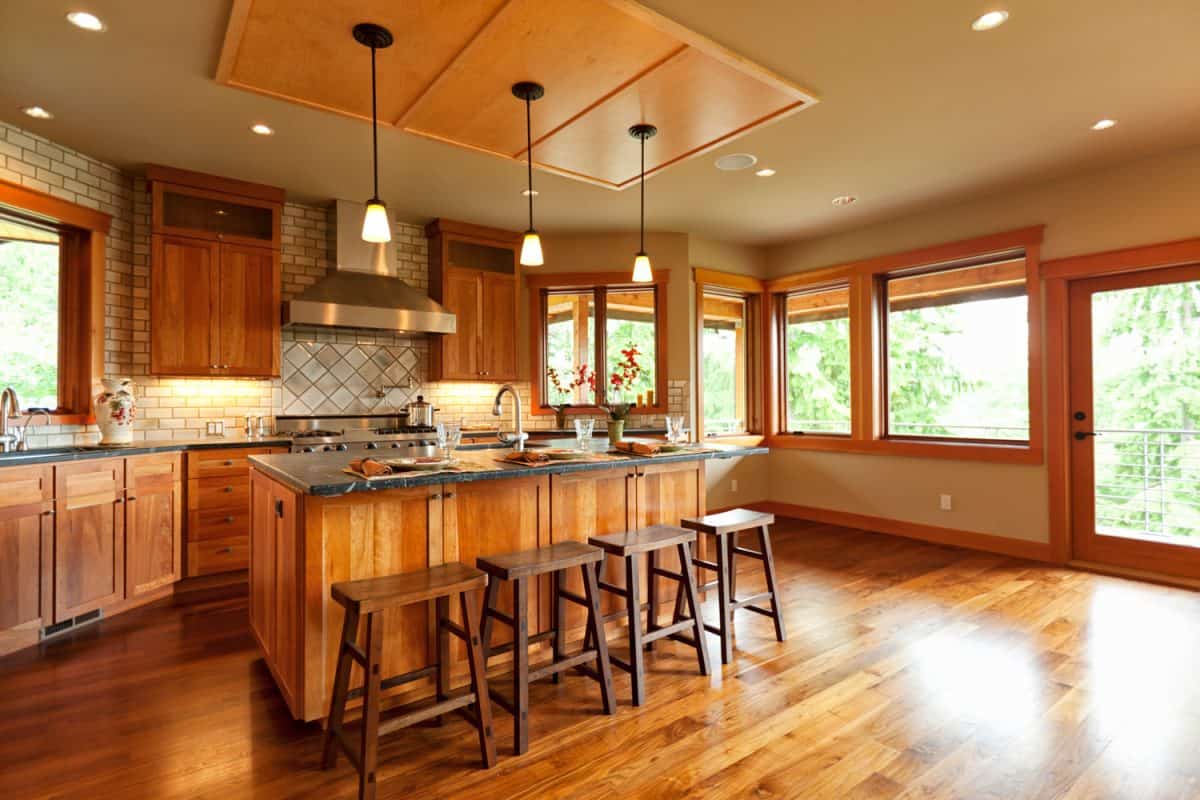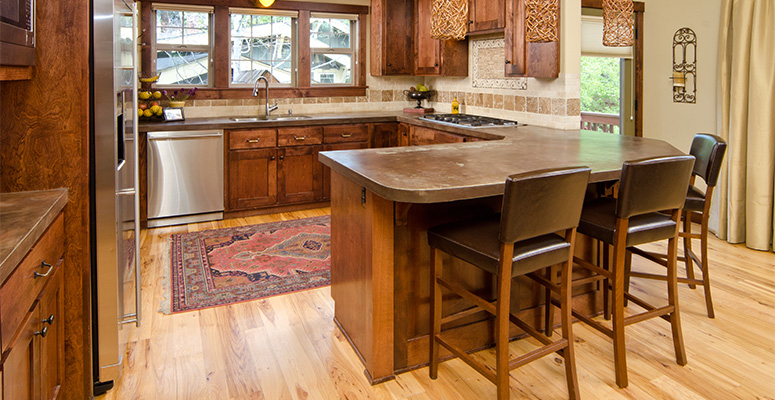Understanding Wood Floor and Cabinet Styles: How To Match Cabinets With Wood Floors

Matching cabinets with wood floors is like finding the perfect partner for your kitchen: a harmonious blend of style and personality. It’s not just about picking colors that go together; it’s about understanding the nuances of wood floor styles and cabinet finishes and how they interact to create a cohesive look.
Wood Floor Styles
Wood floors come in a wide variety of styles, each with its own unique characteristics. Understanding these styles is crucial for selecting the right floor to complement your cabinets.
- Hardwood Flooring: This is the most popular choice for wood floors, offering durability and timeless elegance. Hardwood flooring comes in various species, each with its own distinct color, grain pattern, and hardness. For example, oak is a popular choice for its durability and warm tones, while maple is known for its lighter color and hard-wearing nature.
- Engineered Hardwood Flooring: This type of flooring combines a thin layer of hardwood veneer with a plywood core, offering stability and affordability. Engineered hardwood flooring is available in a wide range of styles and finishes, making it a versatile option for various design aesthetics.
- Laminate Flooring: A cost-effective alternative to hardwood, laminate flooring simulates the look of wood with a photographic layer printed on a durable core. Laminate flooring is available in various styles, including wood, stone, and tile, making it a practical choice for high-traffic areas.
Cabinet Finishes
Cabinet finishes play a significant role in setting the tone for your kitchen. They can range from traditional to contemporary, influencing the overall feel of the space.
- Painted Cabinets: Painted cabinets offer a clean, crisp look and can be customized with a wide range of colors. White cabinets are a classic choice for a timeless and airy feel, while bold colors can add a touch of personality and vibrancy.
- Stained Cabinets: Stained cabinets showcase the natural beauty of wood, highlighting its grain patterns and color variations. Staining allows for a wide range of color options, from warm browns to rich reds, depending on the wood species and stain color chosen.
- Glazed Cabinets: Glazing adds depth and dimension to cabinet finishes, creating a subtle sheen or a more dramatic effect. Glazing can be used to enhance the natural beauty of wood or to create a more antique or distressed look.
Matching Cabinet Finishes with Wood Floors
The key to successful cabinet-floor pairings is finding a balance between contrast and harmony.
- Traditional Style: For a traditional look, consider pairing dark stained cabinets with medium-toned hardwood floors. This combination creates a warm and inviting ambiance. For example, cherry cabinets with a rich mahogany stain can be beautifully complemented by oak flooring in a medium brown finish.
- Modern Style: Modern kitchens often feature clean lines and minimalist aesthetics. Light-colored cabinets with a matte finish can create a contemporary feel when paired with light-toned engineered hardwood flooring. For example, white cabinets with a smooth finish can be paired with maple flooring in a light natural finish.
- Rustic Style: Rustic kitchens often embrace natural textures and distressed finishes. Reclaimed wood cabinets with a weathered finish can be paired with wide-plank hardwood floors in a rustic finish. For example, distressed pine cabinets can be paired with reclaimed oak flooring with a wire-brushed finish.
Color Matching and Harmony

Matching cabinet colors to wood floors is like finding the perfect dance partner—it’s all about creating a harmonious blend that enhances the overall aesthetic of your space. The right color combination can make your home feel spacious, cozy, or sophisticated, while a clashing mismatch can make it feel cramped or disjointed.
Using Color Wheels and Color Theory
Color theory provides a framework for understanding how colors interact and create different visual effects. A color wheel, a circular representation of colors, is a helpful tool for visualizing color relationships.
- Analogous Colors: These colors sit next to each other on the color wheel, creating a harmonious and calming effect. For example, a warm brown floor might pair well with cabinets in shades of orange or yellow.
- Complementary Colors: These colors sit opposite each other on the color wheel, creating a high-contrast and visually stimulating effect. For example, a cool gray floor could be paired with warm red cabinets for a bold statement.
- Triadic Colors: These colors are evenly spaced on the color wheel, creating a balanced and vibrant effect. For example, a light wood floor could be paired with cabinets in shades of blue, green, and orange.
Understanding Warm and Cool Tones
Colors can be categorized as warm or cool, depending on their association with specific temperatures.
- Warm Tones: Warm tones, such as reds, oranges, and yellows, evoke feelings of warmth, energy, and comfort. They tend to make spaces feel smaller and more intimate.
- Cool Tones: Cool tones, such as blues, greens, and purples, evoke feelings of calmness, serenity, and spaciousness. They tend to make spaces feel larger and more airy.
When matching cabinets and floors, consider the overall tone you want to create. If you desire a warm and inviting atmosphere, opt for warm-toned cabinets and floors. For a cool and sophisticated look, choose cool-toned options.
Recommended Cabinet Finishes for Different Wood Floor Colors
| Wood Floor Color | Recommended Cabinet Finishes |
|---|---|
| Light Oak | White, Cream, Light Gray, Natural Stain |
| Medium Oak | Beige, Taupe, Light Brown, Espresso Stain |
| Dark Walnut | Black, Dark Gray, Deep Brown, Cherry Stain |
| Red Oak | Reddish Brown, Mahogany Stain, Cherry Stain |
Creating Visual Interest and Balance

Creating visual interest and balance in your kitchen or bathroom is essential for achieving a harmonious and pleasing aesthetic. This involves carefully considering the interplay between your cabinet and floor choices, ensuring they complement each other while adding visual depth and dimension to the space.
Contrasting and Complementary Color Choices
Contrasting and complementary color choices are powerful tools for creating visual interest in your space. When used effectively, they can draw the eye, enhance the perception of depth, and add a sense of dynamism.
* Contrasting Colors: This approach involves using colors that are opposite each other on the color wheel, such as blue and orange, red and green, or yellow and purple. These contrasting colors create a strong visual impact, making your cabinets and floors stand out against each other. For instance, pairing dark, rich wood cabinets with light, cool-toned flooring can create a dramatic and sophisticated look.
* Complementary Colors: This approach uses colors that are adjacent to each other on the color wheel, such as blue and green, red and orange, or yellow and red. Complementary colors create a sense of harmony and visual balance, making the space feel more cohesive and serene. For example, pairing warm, earthy tones like brown and beige can create a warm and inviting atmosphere.
Impact of Different Wood Species
Choosing different wood species for your cabinets and floors can add another layer of visual interest and depth to your space. Each wood species possesses unique characteristics, including grain patterns, color variations, and textures, which can significantly impact the overall aesthetic.
* Light Wood Floors: Light wood floors, such as maple, birch, or ash, can create a sense of spaciousness and airiness. They are versatile and can be paired with a wide range of cabinet styles, from contemporary to traditional.
* Dark Wood Floors: Dark wood floors, such as walnut, cherry, or mahogany, add warmth and richness to a space. They can create a more formal and elegant ambiance, especially when paired with lighter cabinets.
* Cabinetry Choices: Consider the grain patterns and color variations of the wood species you choose for your cabinets. For instance, a cabinet with a pronounced grain pattern, like oak, can add visual interest and texture to a room.
Balanced Room Design
Here’s an example of a balanced room with harmonious cabinet and floor choices:
* Scenario: Imagine a modern kitchen with a sleek, minimalist aesthetic. The floor is made of light-colored oak, creating a sense of spaciousness and reflecting natural light. The cabinets are made of dark walnut, adding warmth and richness to the space. The contrast between the light floors and dark cabinets creates a visually appealing and dynamic effect, while the clean lines and modern design elements enhance the overall harmony of the space.
Tips for Achieving a Visually Appealing Kitchen or Bathroom, How to match cabinets with wood floors
Here are some tips for achieving a visually appealing and cohesive kitchen or bathroom space:
* Consider the overall style of your home: Choose cabinet and floor materials that complement the existing style of your home. If you have a traditional home, opt for classic wood species like cherry or oak. For a contemporary home, consider sleek and modern materials like maple or walnut.
* Use a consistent color palette: This will help create a sense of unity and harmony throughout the space. You can use a single color as your primary hue and then incorporate different shades and tones of that color for your cabinets and floors.
* Incorporate contrasting elements: This will add visual interest and prevent the space from feeling too monotonous. You can achieve this by using different wood species for your cabinets and floors, or by adding pops of color through accessories and decor.
* Consider the size of your space: If you have a small kitchen or bathroom, you may want to choose lighter-colored floors and cabinets to create a sense of spaciousness. For larger spaces, you can experiment with darker colors and richer wood species.
* Don’t be afraid to experiment: There are endless possibilities when it comes to matching cabinets and floors. Experiment with different combinations and see what works best for your space and personal style.
How to match cabinets with wood floors – Matching cabinets with wood floors is a balancing act of color and tone. You want the cabinets to complement, not clash, with the existing wood. Consider a wooden toilet roll cabinet for a bathroom, ensuring its finish harmonizes with the floor, creating a cohesive and elegant space.
The same principle applies to kitchens, living rooms, or any space where cabinets and wood floors meet. Choose wisely, and your home will exude a sense of harmony and style.
Matching cabinets with wood floors is a balancing act between harmony and contrast. A lighter floor can make cabinets appear larger, while a darker floor can ground them. For a more cohesive look, consider the color and grain of the wood used in your cabinets.
If you’re seeking high-quality, handcrafted doors for your cabinets, wood mode cabinet doors offer a wide range of styles and finishes. Once you’ve chosen your cabinet doors, you can then select a floor that complements their color and tone, ensuring a visually pleasing and unified space.
